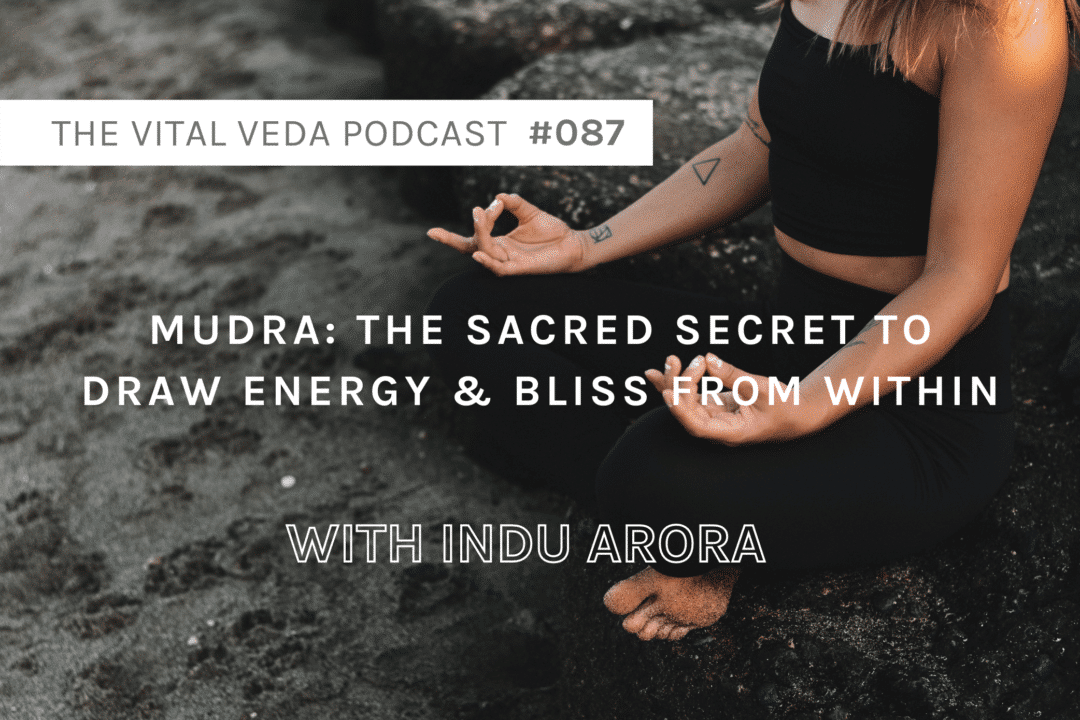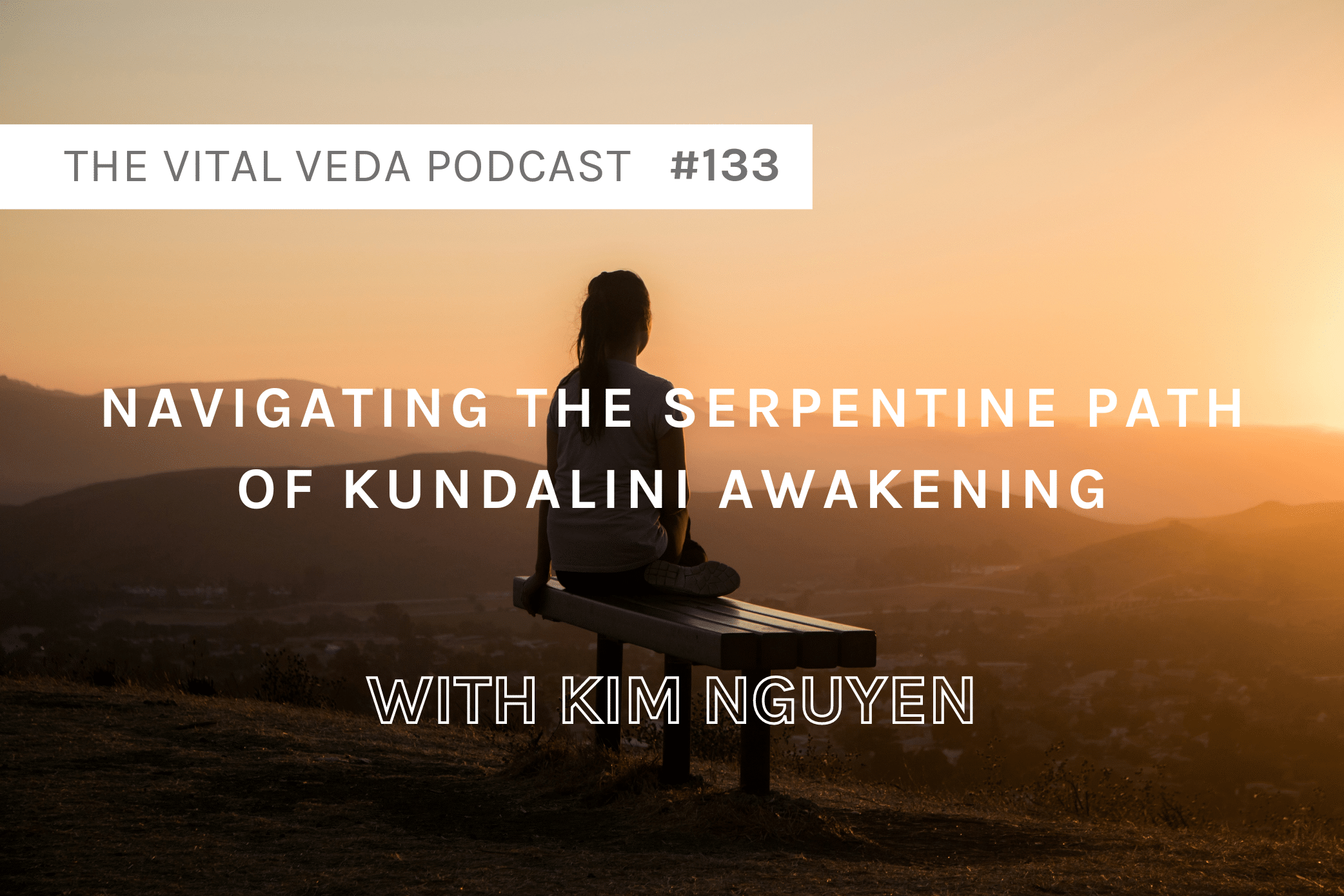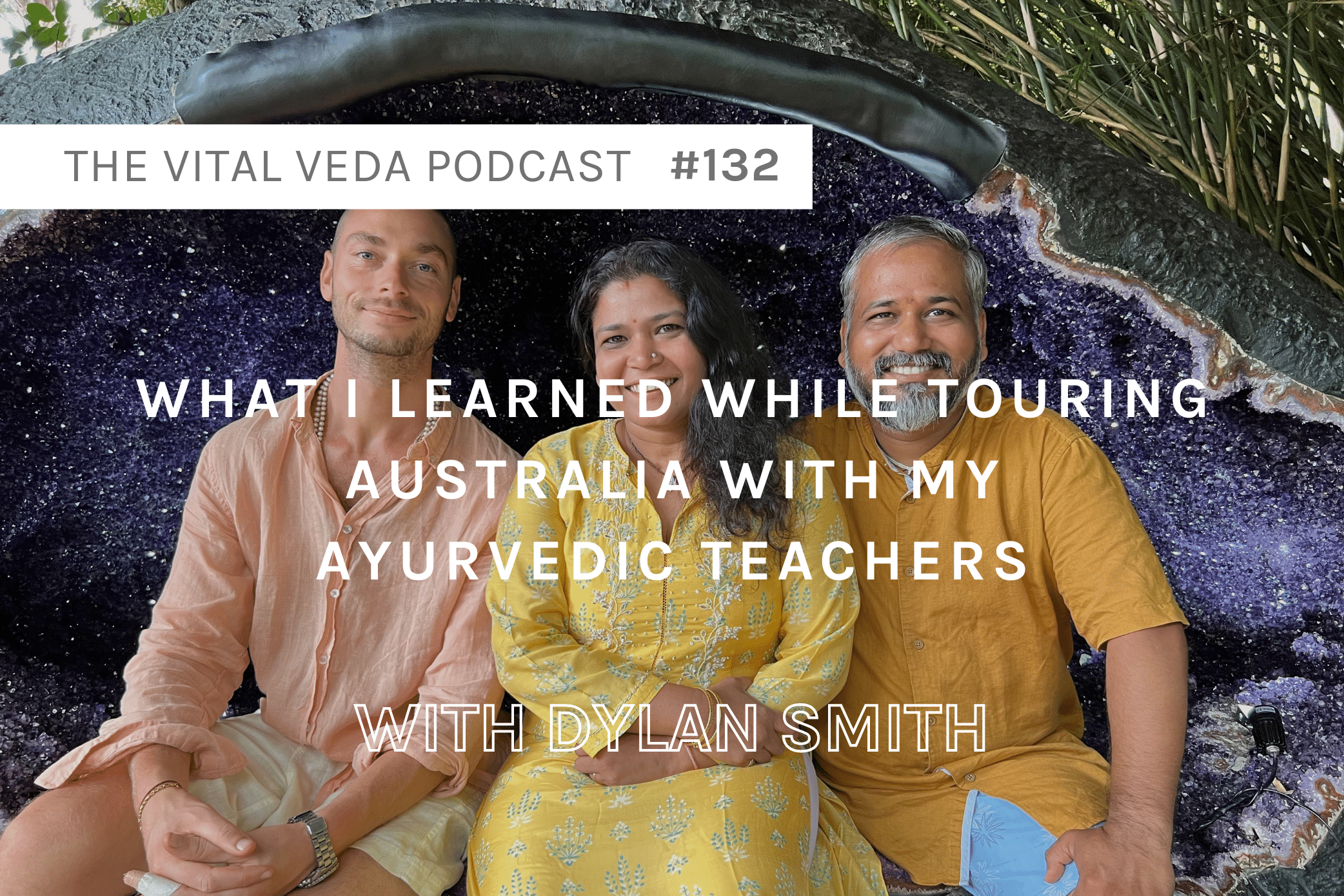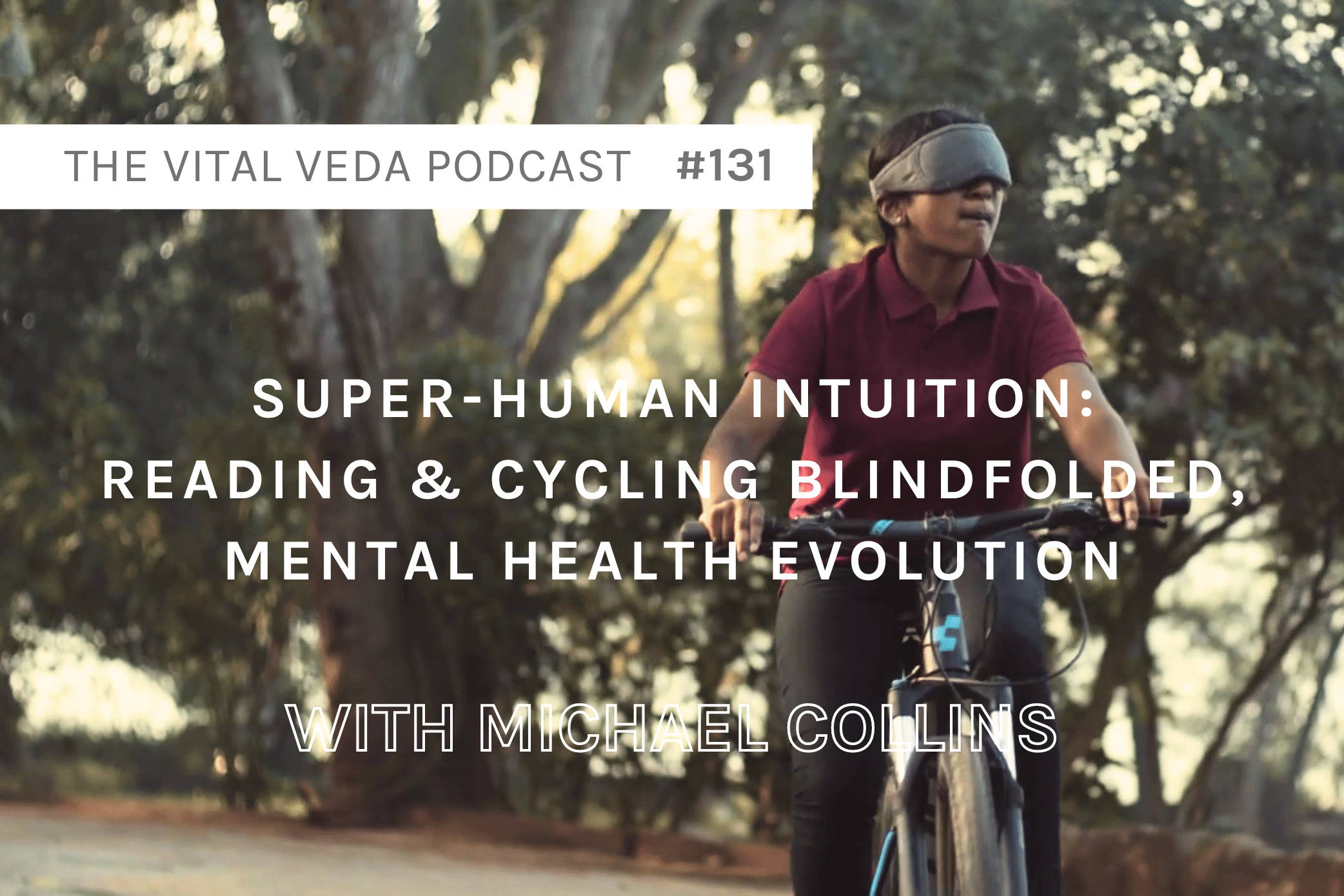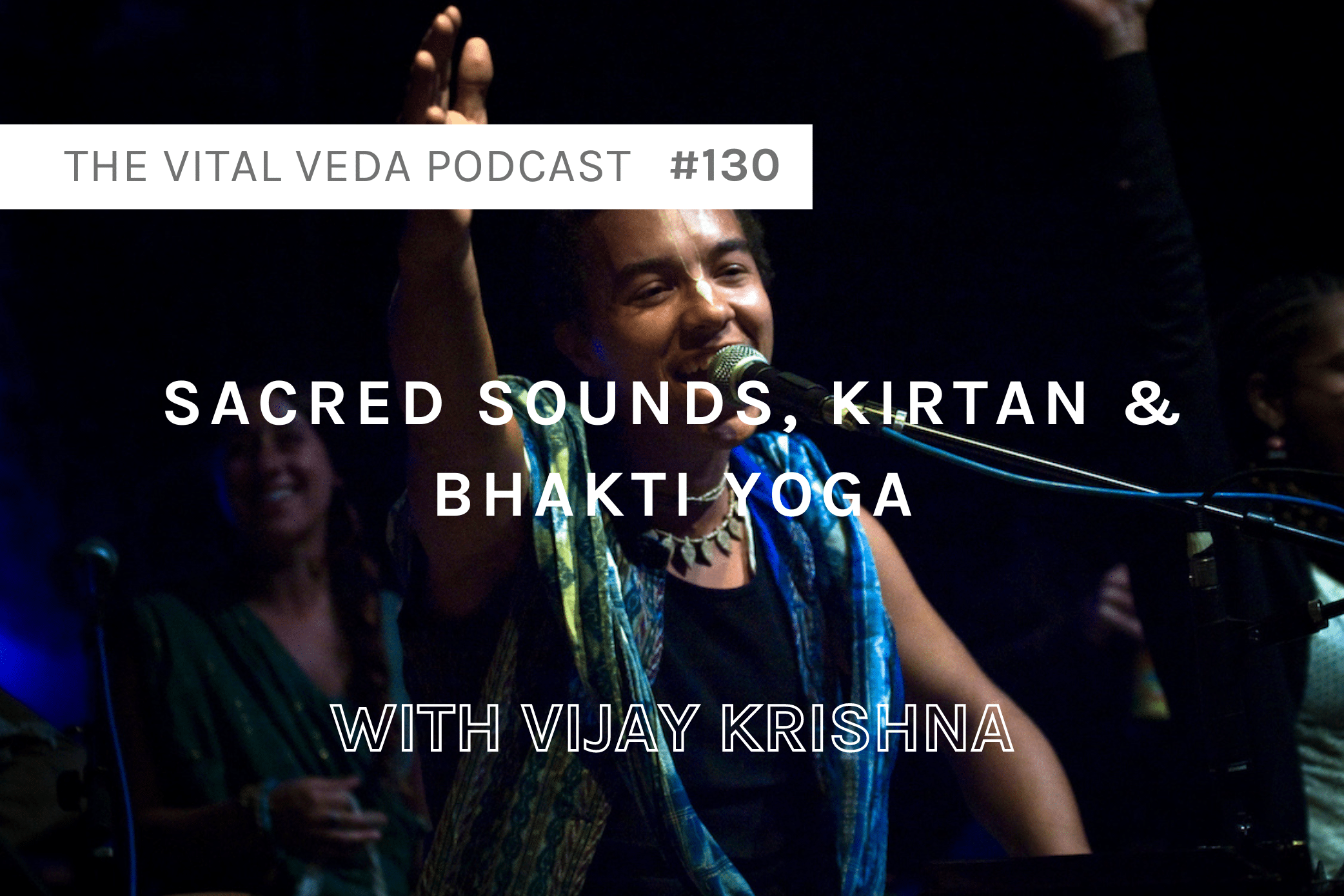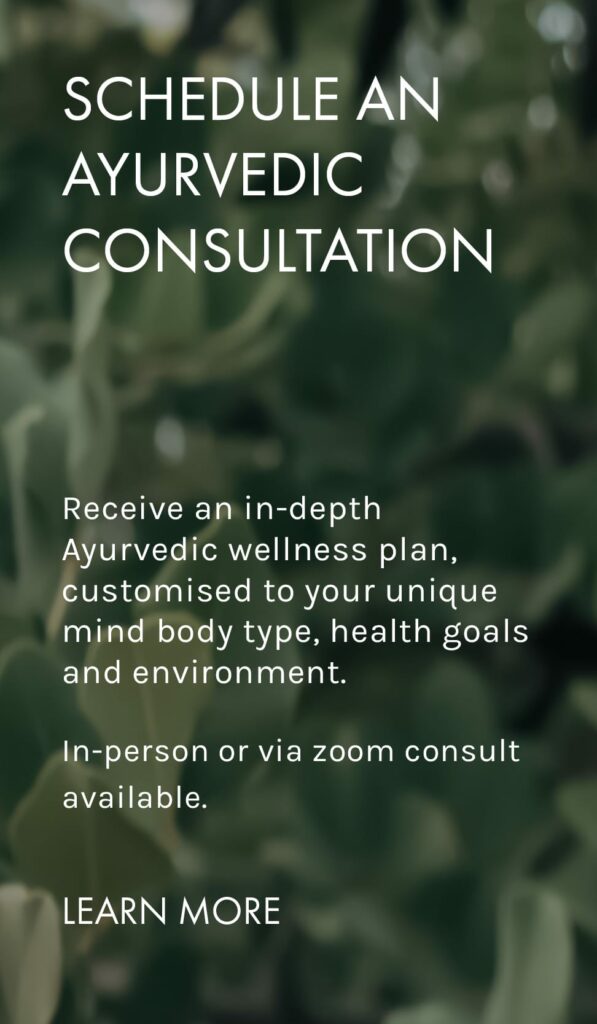The ancient Vedic science of mudras is one that I’ve been inclined to explore for some time now.
Mudras are much more than mere positions of hands or body parts that one can use to evoke a feeling or state of mind during meditation or yoga.
They are intricate and deeply significant “body holds” that allow us to draw forth different energies from within ourSelves that ultimately lead us to our natural & innate state of bliss (sat chit ananda).
For this episode I had the absolute pleasure to converse with Indu Arora. She is a powerful yogini and Ayurvedic Practitioner who has extensively studied and written about this ancient science of mudras.
Get ready to explore with us a different and fresh side to Yoga; a side that is very rarely explained and presented in such a graceful, thorough & accessible manner.
ABOUT OUR GUEST: INDU ARORA
Indu Arora is a student for lifetime.
She shares the Yogic and Ayurvedic wisdom which brings simplicity to our complex lives.
Indu is an author and public speaker who has been sharing simple, effective, practical, grounded ways of living life through Yoga, Yoga Therapy, Meditation and Ayurveda since 1999 and she is going to do that for the rest of her life.

IN THIS EPISODE WE DISCUSS:
Contents hide
Daily Contemplation or “Atma Vichara”
Atma Vichara is a yogic practice rooted in ancient yogic scriptures, and is also known as “ātma tattva avalokanam”.
-
It consists of the idea of being in touch with the essence or substance of the Self or ātma.
Practicing atma vichara is a powerful daily practice that not only grounds the Self, but also creates space for sustainable spiritual & emotional growth and self-accountability.
The Name “Indu” & It’s Relationship with The Moon
The letter “i” represents shakti – divine feminine energy in the cosmos.
The word “Indu” means “moon” 🌕 – the calming & soothing energy of the moon.
Other names for the moon are Soma (alluding to the divine nectar of the moon) and Chandra (alluding to its bright and glittering light).
An Introduction To Mudras
Mudra
Mud – mudita = delight.
dra = draw forth.
“That which draws forth from within the natural state of bliss or delight. It is a becoming.”
Mudra is a state of mind expressed through the body. Every time we practice a mudra we are opening up that pathway for the mind to become that.
Whenever there is an energy that takes the form of a shape or sound, that is a mudra.
-
Any asana, kriya, mantra chanting or even sitting in meditation is a mudra.
Every mudra leaves a unique signature on the breath.
There are many types of mudras: eye mudras, hand mudras, mouth mudras, sound mudras, internal mudras, full body mudras (asanas).
-
Hand mudras are just the beginning of mudras, much like asanas are just the beginning of yoga.
What Exactly Makes a Mudra
In short: awareness & understanding.
Any expression of energy can be a mudra, as long as there is awareness being directed to the source energy. All asanas can be a mudra, but not all are.
-
If you are practicing them robotically without bringing awareness to the underlying energy of that posture, then you are not doing a mudra, just exercise.
To become mudra, there first needs to be deep awareness, followed by bhavna (sentiment or emotion) & sankalpa (intention).
The Gyan Mudra (Meditation Mudra or Wisdom Seal)
Probably the most well known mudra of all.
This mudra represents the totality of samkhya darshan (the philosophy of duality).
-
Samkhya states that the human experience is constituted by two independent ultimate principles: puruṣa (‘consciousness’ or spirit/soul); and prakṛti (cognition, mind and emotion, also known as nature or matter)
The three extended fingers represent the three maha gunas (sattva, rajas & tamas), the three doshas (vata, pitta, kapha), the three states of consciousness (awake, dream & dreamless sleep) and the bondage of time (past, present and future).
The index finger represents the prakṛti and the thumb represents the puruṣa.
-
When the index finger (prakṛti) moves towards the thumb (puruṣa) for yoga (unity or union) we are beyond all of these sets of three. We are in (or moving towards) the field of transcendence.
How To Properly Approach Mudras
The Importance of Eating With Your Hands
It is the natural way of humans to eat with our hands.
-
When babies are born their natural tendency is to eat with their hands using the pincer hold.
Then we are taught otherwise by our parents and told what is civilized and what isn’t.
-
The same thing applies to many other natural (and healthy) tendencies of the body – we hold our flatulences, our need to urinate, our need to burp, we sometimes even apologize after sneezing! All in the name of being more “civilized” or conforming to certain societal norms.
In Ayurveda we say that you should not suppress any natural urge.
Eating with one’s hands allows for a full sensory experience that unquestionably leads to satisfaction and contentment.
When you eat with your hands, you bring all of your fingers together to hold a piece of food – this is in itself a mudra called samana mudra.
-
This mudra enhances digestion and assimilation of food, by means of the samana prana.
The five fingers also represent the 5 elements or mahā bhūtas (fire, water, earth, ether & air).
The thumb represents fire 🔥, the pinky represents water💧, the ring finger represents earth 🪨, the middle finger represents space ✨ and the index represents air 💨.
When using all 5 fingers, you are sending a message to your body saying: “may whatever it is that I’m eating bring balance to the 5 mahā bhūtas (and the three doṣas) that reside within me”.
To learn more on this topic read Drop the Utensils, rather: Eat With Your Hands!
The Namaste Mudra
It is done by bringing together the palms of both hands with the fingers all close to each other.
-
Represents the duality of ida & pingala, of opposing points, with an intent of gentle gratitude, surrender & appreciation.
There are many forms of the namaste mudra:
-
When we’re keeping our hands in front of the chest we’re recognizing the other being with our heart.
-
When under the nostrils, that is us doing namaskar to our own prana (life-force).
-
When we keep them in front of the forehead, that is something we do in front of teachers or gurus.
Recommended Mudras to Practice At Home
-
Samana mudra to enhance digestion of food
-
Gyan mudra to bring balance to the body and allow for greater transcendence
-
Namaste mudra to bring gratitude and humbleness into our consciousness.
RESOURCES
Indu’s Website HERE
Indu’s Instagram (@induarora) HERE
–
📕 c.
Mudra Training 2022 (October 12-16 at @devanadiyoga) Will be offered hybrid: particularly can join In-Person or Livestream based on convenience and availability.
SUPPORT THE SHOW
Please leave me a comment below (I love to read every single one).

